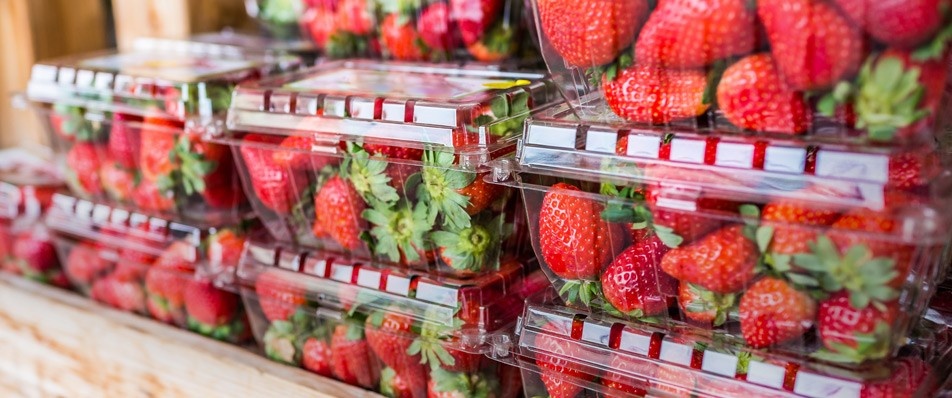
There are approximately 2.2 million farms in the United States and the average American consumes roughly 273.2 lbs. of fruit each year. This means that for farms to provide fresh produce to Americans, as well as exporting farm goods to other countries, produce needs to be delivered in a way that maintains its freshness, quality, and taste while being transported to grocery store shelves.
Proper fruit packaging is even more important considering that 54% of wasted food is lost during the production process, post-harvest treatment procedures, or in storage and transportation. It is vital for producers of fresh fruit to understand the importance of agricultural packaging for your business to obtain short and long-term sustainability. Finding the right packaging is crucial to delivering the freshest and most cost-effectively shipped products.
The Ideal Fruit Packaging for Your Product
Pairing the correct produce packaging with the correlating agricultural good is essential to successful transportation of quality goods. Each product has different handling needs, resulting in diverse types of packaging to ensure they arrive ready to purchase and consume.
If you are focusing on aspects of superior fruit packaging, you will want to encompass these basic functions:
- Ventilation allowing heat from respiration to escape and accelerate the cooling of your contents
- Reduction crop/produce water loss
- Aversion to possible injury to contents during transit and handling
Since produce packaging must contain specific elements to protect its contents or fruits or vegetables, it is no surprise that 66% of the carton packaging market is dedicated to food-related segments, specifically produce.
Fruit Packaging Solutions
Bananas will require a different style of packaging than cherries or even avocados. This means that for every fruit, a special packaging must be implemented to ensure the contents arrive safely. The key to finding the right solution for your produce packaging is to look for packaging that improves not only the shipment and retail process, but improves your manufacturing, is cost effective, and allows for key branding; whether that means case and carton, flexible packaging, or retail ready designs.
Consider Corrugated Packaging
Corrugated packaging tends to be the most popular and safest solution for produce. Every box, tray, and carton is used only once before being recycled, preventing cross-contamination. This enables growers, retailers, and consumers to have optimum hygienic conditions. The aspect of single-use is important: for example, an outbreak of the destructive banana disease Fusarium wilt TR4 in Asia and Australia led the United Nations Food and Agriculture Organization to urge countries to be vigilant and take measure to prevent further contamination.
The best way to fight disease is to prevent its spread, therefore, single-use packaging eliminates the possibility of wide transfer. Corrugated packaging can be adapted to all shapes and sizes reducing potential for damage or product loss during transportation, warehousing, and transfer to shelves. It also presents the opportunity of being retail ready with key branding messaging because corrugated has the possibility of being directly printed on.
Hard vs. Flexible
Clamshell packaging and flexible packaging are also popular choices when it comes to fruit packaging, each providing plenty of ventilation through perforation. These can be especially useful for smaller fruits such as blueberries, cherry tomatoes, and grapes. Three types of fruit packaging that provide this ventilation style include:
- Closed packaging without holes – made with a thin film that allows gasses to slowly seep through by disintegration
- Micro-perforated packaging – flexible packaging that allows carbon dioxide, water vapors, and oxygen to pass through
- Macro-perforated packaging- clamshell packaging with large holes or slits for ventilation
Selecting the ideal type of hard or flexible fruit packaging material will ensure your produce remains fresh and ready to sell. Packaging assembly and product protection should be taken into consideration when selecting packaging material, type, and adhesives.
Due to respiration and ripening, fruit tends to age and spoil quickly; however, the aging of fruit can be slowed down by as much as 800% when the packaging and temperatures are optimal. Having the correct produce packaging will ensure your products last longer and arrive at their destination in optimal condition.
